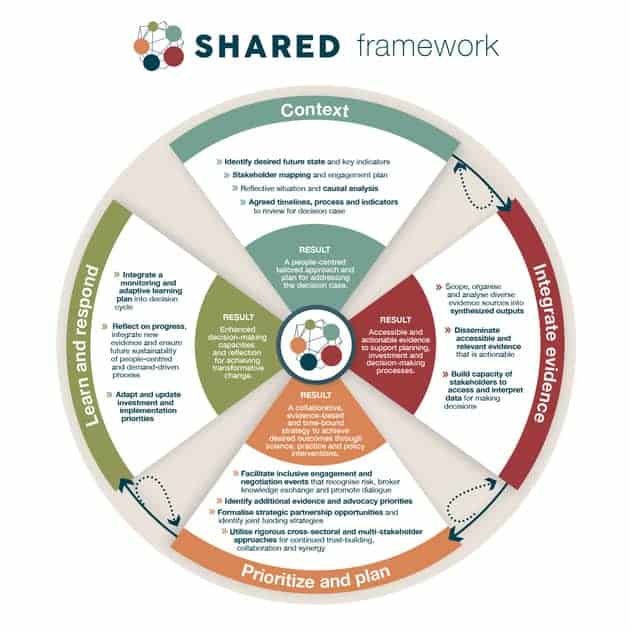What makes an integrated development plan truly integrated?
- From
-
Published on
08.05.20
- Impact Area

When the Turkana County Government in Kenya partnered with the Stakeholder Approach to Risk-Informed and Evidence Based Decision (SHARED) Hub to strengthen their capacity to make decisions based on inclusivity and evidence, the results were game-changing.
Kenya offers a particularly interesting case study in effective integrated development planning because its political structure was reformed fairly recently. The 2010 constitution put in place a two-tier system of governance – a national government and 47 county governments – giving new decision-making powers to the county level. With this legislative change, counties had to submit County Integrated Development Plans to access funds. During the first five-year planning cycle (2013–2017), annual budgets were hastily constructed, plans for different sectors were pieced together and little attention was paid to integration.
Related news
-

From Dirt to Decision-Making: Governance and Soil Health Must Go Hand in Hand
Multifunctional Landscapes Science Program26.11.25-
Biodiversity
-
Environmental health
-
Environmental health & biodiversity
In October, the world convened in Des Moines for the 2025 Borlaug Dialogue under the…
Read more -
-

CGIAR Multifunctional Landscapes at COP30: Advancing Adaptation and Nature-Based Solutions
Multifunctional Landscapes Science Program10.11.25-
Adaptation
-
Biodiversity
-
Environmental health
-
Environmental health & biodiversity
-
Mitigation
COP30 in Belém, Brazil is being heralded as a pivotal “COP of adaptation” and a…
Read more -
-

SOILutions for Security: CGIAR at the 2025 Borlaug Dialogue
Multifunctional Landscapes Science Program22.10.25-
Biodiversity
-
Environmental health
-
Environmental health & biodiversity
-
Food security
-
Nutrition
From October 21–23, CGIAR will join global partners in Des Moines, Iowa for the 2025…
Read more -
